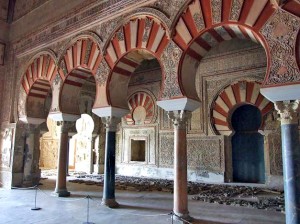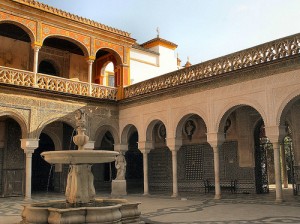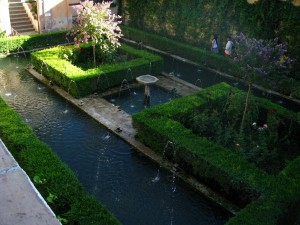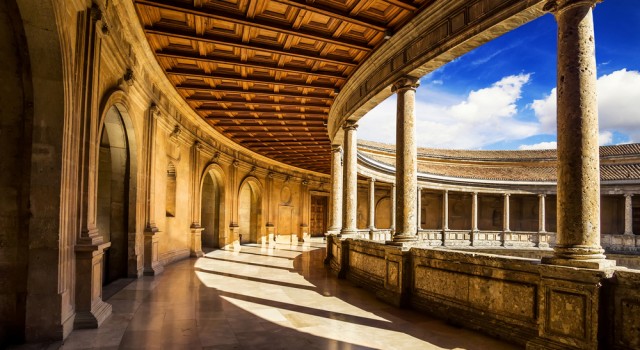 the Travel Enthusiast
the Travel Enthusiast
- 01 Sep
Spain’s Moorish heritage: the best of Moorish architecture
In the course of history, there are very few (if any) culture which haven’t been influenced by other peoples, be they colonists, invaders or peaceful neighbours. It’s not difficult to notice that the influence of Europeans is the dominant factor – especially when it comes to the American continent and many parts of Asia and Africa.
But Europeans haven’t been the only ones who have forced their customs and culture on other people, the Turks or the Moors did it as well (though maybe not quite so prominently).
History has its good and bad parts, and invading another country could ultimately lead to some good results as well. In the case of the Moors, who conquered most of the Iberian Peninsula, the most important inheritance is their architecture, which continues to amaze people even nowadays.
So here is a list of some of the most impressive and rather underrated examples of Moorish architecture in Spain.
Medina Azahara
 The ruins of the Moorish city of Medina Azahara are located about 5 km from Cordoba, and they were excavate din 1910. Despite having been rediscovered for a hundred years, only about 10% of the ruins has been dug out and restored. The city was built in the 10th century, and its period of glory was not long-lasting (only about 80 years), but nonetheless, it used to be the capital of Al-Andalus, the Moorish kingdom in Iberia.
The ruins of the Moorish city of Medina Azahara are located about 5 km from Cordoba, and they were excavate din 1910. Despite having been rediscovered for a hundred years, only about 10% of the ruins has been dug out and restored. The city was built in the 10th century, and its period of glory was not long-lasting (only about 80 years), but nonetheless, it used to be the capital of Al-Andalus, the Moorish kingdom in Iberia.It used to be a magnificent city, built in terraces on the hillside, and with the Caliph’s palace at the top. In time, the city was buried and forgotten, but hopefully the local government of Cordoba will finish excavating this archetypal Moorish city and show it to the world.
Alcázar of Seville
 Alcázar is the Spanish word or castle, and many alcázars in Spain used to be royal residences built by the Spanish. However, the occasional ruler converted beautiful Moorish buildings into palaces. The palace was originally a Moorish fort built by the dynasty of the Almohades, but subsequent Spanish monarchs have added new parts to the palace.
Alcázar is the Spanish word or castle, and many alcázars in Spain used to be royal residences built by the Spanish. However, the occasional ruler converted beautiful Moorish buildings into palaces. The palace was originally a Moorish fort built by the dynasty of the Almohades, but subsequent Spanish monarchs have added new parts to the palace.Nowadays, the royal family are still using the palace as their residence while they’re visiting Seville. Patio de las Doncellas, or the Courtyard of Maidens has a rather unpleasant story behind it (named after the 100 Christian maidens given as tribute to the Moorish rulers every year), but it looks beautiful with its reflecting pool and sunken gardens.
- Flights
- Hotels
- Packages
- Cars
- Cruises
travel search by Travelgrove (get this widget)Generalife
 When visiting Granada, seeing Alhambra is not even a question, but the smaller and slightly humbler Generalife should not be forgotten either. Generalife used to be the summer palace of the Nasrid Emirs of the Emirate of Granada, built at the beginning of the 14th century. Generalife was connected to Alhambra through a walkway, but today there are separated by a ravine.
When visiting Granada, seeing Alhambra is not even a question, but the smaller and slightly humbler Generalife should not be forgotten either. Generalife used to be the summer palace of the Nasrid Emirs of the Emirate of Granada, built at the beginning of the 14th century. Generalife was connected to Alhambra through a walkway, but today there are separated by a ravine.The gardens at Generalife are the oldest surviving Moorish gardens in the world, and probably the prettiest as well. Not quite as ornate as Alhambra, but it fills you with a sense of peace and quiet.
You might also like
- 10000

